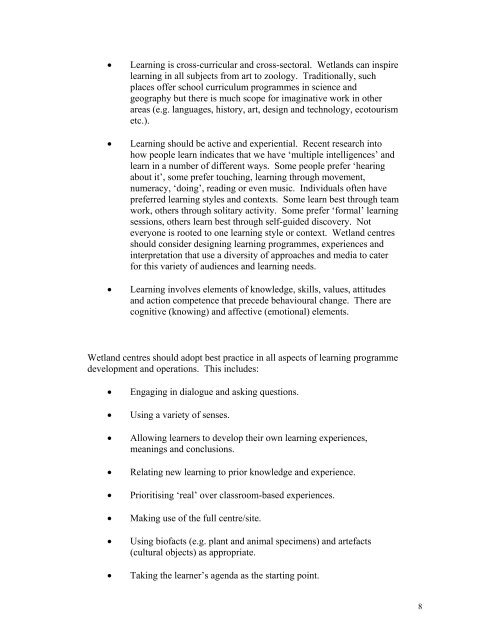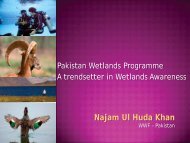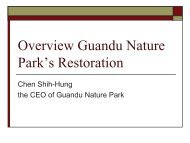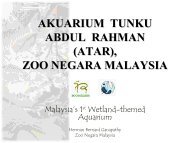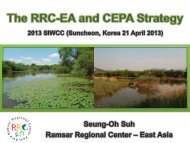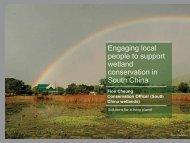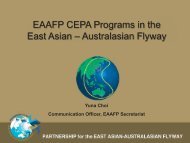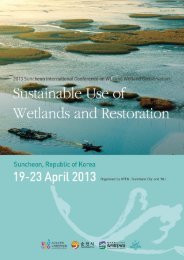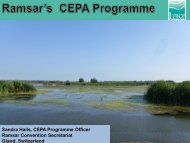developing a wetland centre, English - Wetland Link International
developing a wetland centre, English - Wetland Link International
developing a wetland centre, English - Wetland Link International
You also want an ePaper? Increase the reach of your titles
YUMPU automatically turns print PDFs into web optimized ePapers that Google loves.
• Learning is cross-curricular and cross-sectoral. <strong>Wetland</strong>s can inspirelearning in all subjects from art to zoology. Traditionally, suchplaces offer school curriculum programmes in science andgeography but there is much scope for imaginative work in otherareas (e.g. languages, history, art, design and technology, ecotourismetc.).• Learning should be active and experiential. Recent research intohow people learn indicates that we have ‘multiple intelligences’ andlearn in a number of different ways. Some people prefer ‘hearingabout it’, some prefer touching, learning through movement,numeracy, ‘doing’, reading or even music. Individuals often havepreferred learning styles and contexts. Some learn best through teamwork, others through solitary activity. Some prefer ‘formal’ learningsessions, others learn best through self-guided discovery. Noteveryone is rooted to one learning style or context. <strong>Wetland</strong> <strong>centre</strong>sshould consider designing learning programmes, experiences andinterpretation that use a diversity of approaches and media to caterfor this variety of audiences and learning needs.• Learning involves elements of knowledge, skills, values, attitudesand action competence that precede behavioural change. There arecognitive (knowing) and affective (emotional) elements.<strong>Wetland</strong> <strong>centre</strong>s should adopt best practice in all aspects of learning programmedevelopment and operations. This includes:• Engaging in dialogue and asking questions.• Using a variety of senses.• Allowing learners to develop their own learning experiences,meanings and conclusions.• Relating new learning to prior knowledge and experience.• Prioritising ‘real’ over classroom-based experiences.• Making use of the full <strong>centre</strong>/site.• Using biofacts (e.g. plant and animal specimens) and artefacts(cultural objects) as appropriate.• Taking the learner’s agenda as the starting point.8


